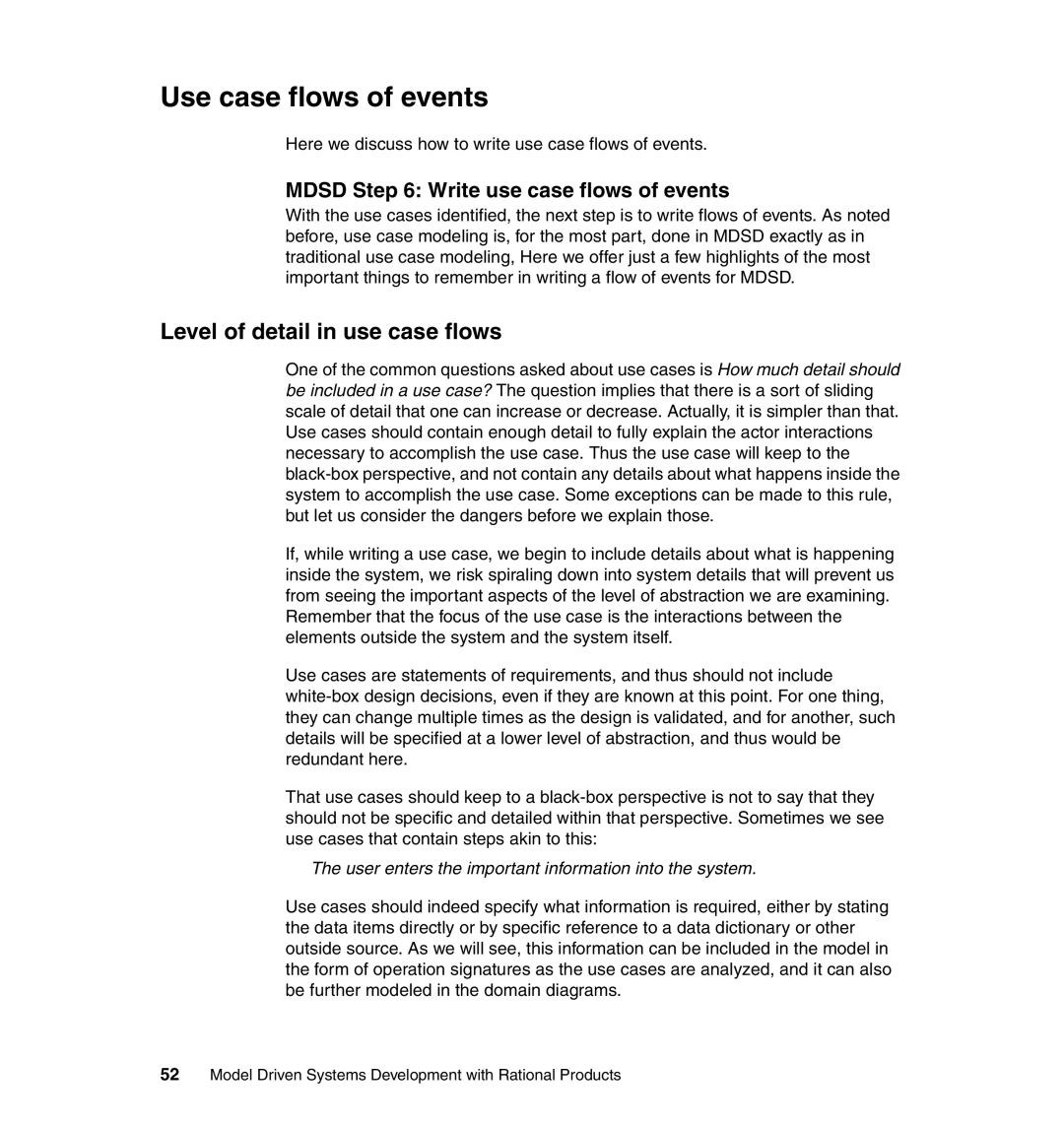Use case flows of events
Here we discuss how to write use case flows of events.
MDSD Step 6: Write use case flows of events
With the use cases identified, the next step is to write flows of events. As noted before, use case modeling is, for the most part, done in MDSD exactly as in traditional use case modeling, Here we offer just a few highlights of the most important things to remember in writing a flow of events for MDSD.
Level of detail in use case flows
One of the common questions asked about use cases is How much detail should be included in a use case? The question implies that there is a sort of sliding scale of detail that one can increase or decrease. Actually, it is simpler than that. Use cases should contain enough detail to fully explain the actor interactions necessary to accomplish the use case. Thus the use case will keep to the
If, while writing a use case, we begin to include details about what is happening inside the system, we risk spiraling down into system details that will prevent us from seeing the important aspects of the level of abstraction we are examining. Remember that the focus of the use case is the interactions between the elements outside the system and the system itself.
Use cases are statements of requirements, and thus should not include
That use cases should keep to a
The user enters the important information into the system.
Use cases should indeed specify what information is required, either by stating the data items directly or by specific reference to a data dictionary or other outside source. As we will see, this information can be included in the model in the form of operation signatures as the use cases are analyzed, and it can also be further modeled in the domain diagrams.
